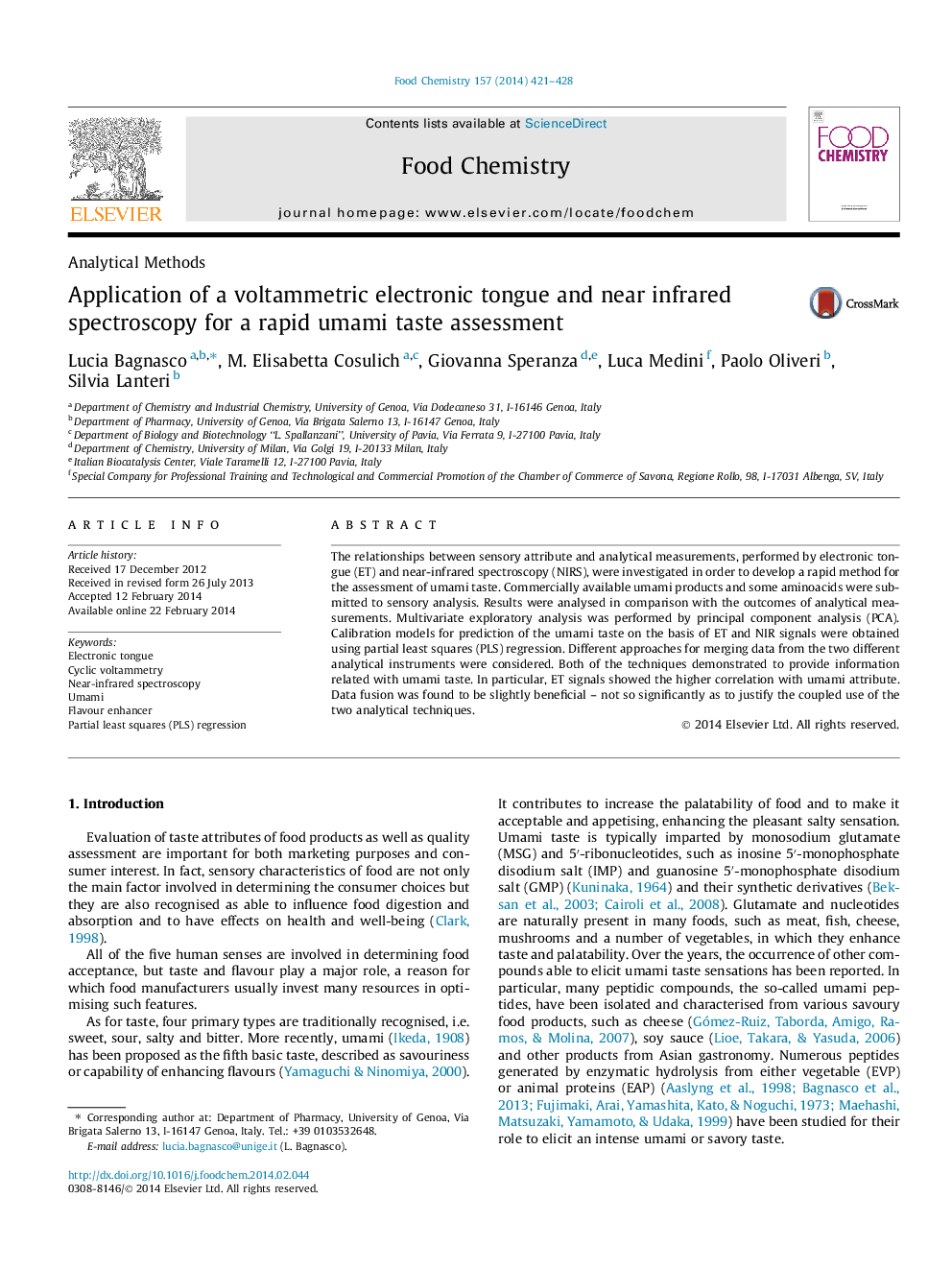| Article ID | Journal | Published Year | Pages | File Type |
|---|---|---|---|---|
| 1184615 | Food Chemistry | 2014 | 8 Pages |
•Correlation between umami taste and analytical measurements is studied.•Electronic tongue and near-infrared spectroscopy are used as instrumental methods.•Both techniques are promising as method for preliminary screening of umami products.•Electronic tongue signals show a better correlation with the umami attribute.•Fusion of the data provides only a small improvement of the results.
The relationships between sensory attribute and analytical measurements, performed by electronic tongue (ET) and near-infrared spectroscopy (NIRS), were investigated in order to develop a rapid method for the assessment of umami taste. Commercially available umami products and some aminoacids were submitted to sensory analysis. Results were analysed in comparison with the outcomes of analytical measurements. Multivariate exploratory analysis was performed by principal component analysis (PCA). Calibration models for prediction of the umami taste on the basis of ET and NIR signals were obtained using partial least squares (PLS) regression. Different approaches for merging data from the two different analytical instruments were considered. Both of the techniques demonstrated to provide information related with umami taste. In particular, ET signals showed the higher correlation with umami attribute. Data fusion was found to be slightly beneficial – not so significantly as to justify the coupled use of the two analytical techniques.
